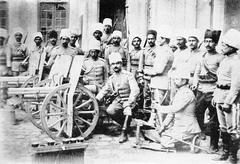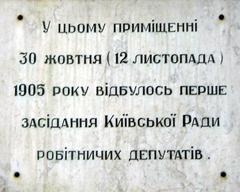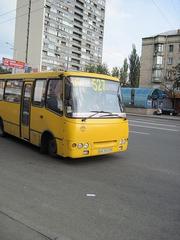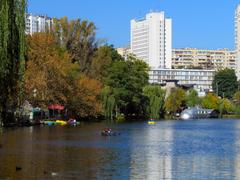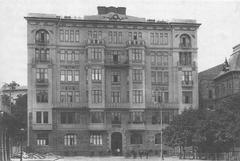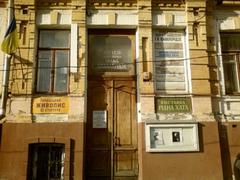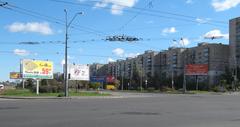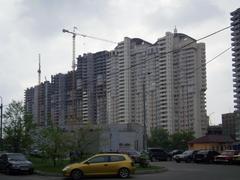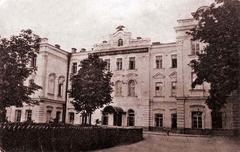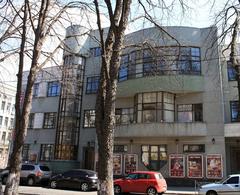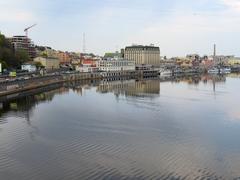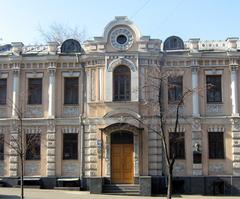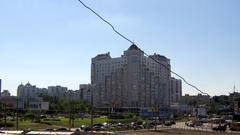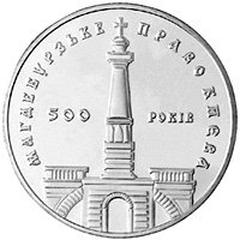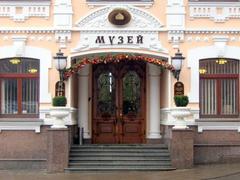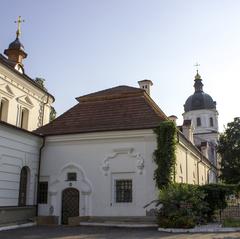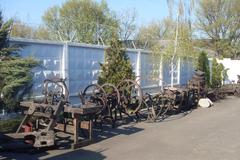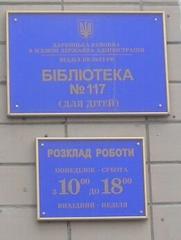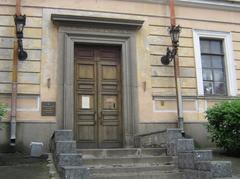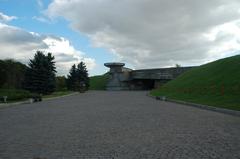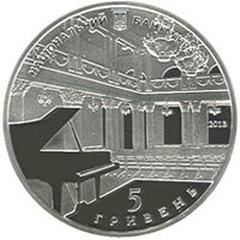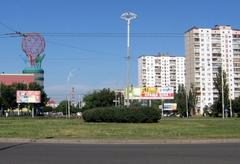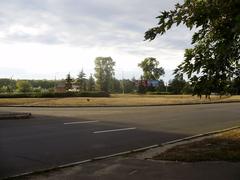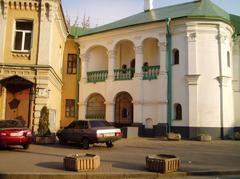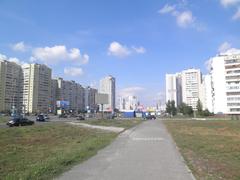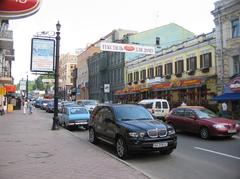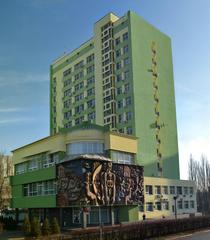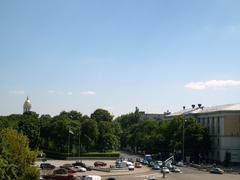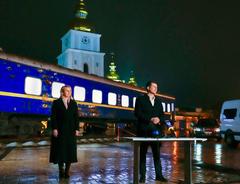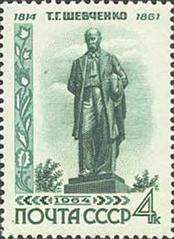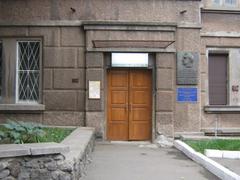
Voloska Street Kyiv: Visiting Hours, Tickets & Historical Sites Guide
Date: 04/07/2025
Introduction to Voloska Street, Kyiv: History and Significance
Voloska Street, set in the historic Podil district of Kyiv, Ukraine, is one of the city’s oldest and most culturally significant streets. With origins tracing back to the 10th century, Voloska Street has long served as a vital commercial artery—its name reflecting ties to Balkan merchants, specifically the Vlachs—connecting the Dnipro River port with the heart of Kyiv (Kyiv History, Podil District). Over the centuries, the street has evolved alongside the city, showcasing an eclectic mix of 19th-century merchant houses, Art Nouveau flourishes, and innovative postmodern Soviet-era buildings.
Today, Voloska Street is a lively hub of creative energy, home to art galleries, artisan workshops, and bustling cafes. Its proximity to landmarks such as the Kyiv-Mohyla Academy, Kontraktova Square, and the Dnipro River embankment makes it a top destination for history enthusiasts, architecture aficionados, and casual explorers alike (Awesome Kyiv, Best Kiev Guide). This guide offers comprehensive insight into the street’s origins, architectural heritage, cultural highlights, practical visitor information, and tips for making the most of your visit.
Contents
- Origins and Early Development
- Medieval to Early Modern Periods
- 19th and 20th Century Transformations
- Architectural Heritage and Cultural Significance
- Visiting Voloska Street: Practical Information
- Preservation and Adaptive Reuse
- Architectural Highlights & Visitor Tips
- Nearby Attractions & Points of Interest
- Museums and Cultural Institutions
- Religious and Spiritual Sites
- Squares, Markets, and Public Spaces
- Cafés, Restaurants, and Nightlife
- Street Art and Urban Culture
- Parks and Green Spaces
- Safety, Transportation, & Visitor Tips
- FAQ
- Conclusion & Call to Action
Origins and Early Development
Voloska Street’s history is deeply interwoven with Kyiv’s mercantile past. Named for the “Volokhi” (Vlachs or Romanians), the street was historically a conduit for Balkan and Danube region merchants (Kyiv History). Archaeological findings suggest that by the 7th or 8th centuries, the area already hosted commercial activity. The street’s prominence grew in the 10th and 11th centuries, serving as a principal trade route from Kyiv’s bustling river port into the city’s inner quarters.
Medieval to Early Modern Periods
During the medieval era, Voloska Street was a melting pot of cultures—Ukrainians, Poles, Jews, Armenians, Greeks, and Vlachs all contributed to its vibrant milieu (Podil District). The street endured significant trials, including the 1240 Mongol invasion and the devastating fire of 1811, but each time it was rebuilt, reaffirming its status as a commercial and cultural center.
19th and 20th Century Transformations
The aftermath of the 1811 Podil fire led to a major urban redesign under architect William Heste, introducing neoclassical architecture and a rational grid plan. Tram lines arrived in the late 19th century, further boosting connectivity. The early 20th century saw Art Nouveau and, later, Soviet influences take hold. Despite damage in World War II, the street was meticulously restored, blending historic features with Soviet-era elements.
Architectural Heritage and Cultural Significance
Voloska Street is a showcase of Kyiv’s architectural evolution. Notable features include:
- 19th-century merchant houses with ornate facades and colorful brickwork
- Art Nouveau buildings from the early 20th century
- Postmodern Soviet-era blocks with distinctive arches, layered rooftops, and whimsical design details (Awesome Kyiv, Builder Science)
The nearby Kyiv-Mohyla Academy, founded in 1615, anchors the street’s intellectual prestige (Kyiv-Mohyla Academy). Today, Voloska Street remains a creative hub, with galleries, studios, and independent businesses energizing the neighborhood (Museum Studies Abroad).
Visiting Voloska Street: Practical Information
- Visiting Hours: The street itself is open 24/7. Most shops, cafes, and galleries operate between 9:00 AM and 8:00 PM.
- Entry Fees: No charge to walk the street. Individual museums and galleries may have ticketed entry.
- Getting There: The nearest metro station is Kontraktova Ploshcha (Obolonsko–Teremkivska line), a short walk away. Tarasa Shevchenka station is also nearby.
- Accessibility: The street is pedestrian-friendly, though cobblestones and uneven surfaces may present challenges for those with mobility impairments.
- Guided Tours: Several local companies offer themed walking tours focusing on Voloska Street’s architecture and history.
- Photographic Spots: Colorful facades, decorative balconies, and river views offer excellent photo opportunities.
- Special Events: Art fairs, open studios, and festivals are common, especially in warmer months.
Preservation and Adaptive Reuse
Efforts to preserve Voloska Street’s historical fabric focus on maintaining its distinctive facades while adapting interiors for modern use. Many former warehouses and merchant houses now serve as cafes, coworking spaces, and galleries, blending heritage with contemporary needs (Awesome Kyiv, Wikimedia Commons). Active local advocacy supports sensitive restoration and sustainable development.
Architectural Highlights & Visitor Tips
- Explore the 19th-century merchant houses at Voloska 19 and 27, renowned for decorative brickwork and wrought-iron balconies.
- Discover postmodern residential complexes designed in the 1980s, notable for their playful details and community-oriented layouts (Builder Science).
- Wear comfortable shoes: Cobblestone streets can be uneven.
- Plan visits during daylight for the best experience of architecture and street life.
- Combine your walk with nearby landmarks such as Andriyivskyy Descent and Kontraktova Square (Best Kiev Guide).
Nearby Attractions & Points of Interest
Museums and Cultural Institutions
-
Ukrainian National Chernobyl Museum: A short walk from Voloska Street, this museum offers moving exhibits on the 1986 disaster (Ukrainian National Chernobyl Museum).
- Hours: Tue–Sun, 10:00 AM–6:00 PM; closed Mondays
- Tickets: ~50 UAH for adults
-
Independent Art Spaces: Numerous galleries and pop-up installations are found along Voloska and neighboring streets, reflecting Kyiv’s vibrant contemporary art scene.
Religious and Spiritual Sites
- St. Nicholas Church on the Water: A distinctive riverside church, open daily 9:00 AM–7:00 PM (St. Nicholas Church on the Water).
- St. Cyril’s Monastery: A 12th-century church famed for its frescoes, easily reached from Podil (St. Cyril’s Monastery).
- Hours: Tue–Sun, 10:00 AM–5:00 PM
Squares, Markets, and Public Spaces
- Kontraktova Square: The historical heart of Podil, hosting open-air markets, festivals, and the iconic Ferris wheel (Kontraktova Square).
- Petrivka Market: A popular flea market for antiques and curiosities (Petrivka Market).
Cafés, Restaurants, and Nightlife
- Puzata Chata: Near Kontraktova Square, this cafeteria-style restaurant serves classic Ukrainian dishes (Puzata Chata).
- Trendy Cafés and Craft Bars: Many feature live music, art events, and outdoor seating in summer.
Street Art and Urban Culture
- Murals and Installations: Voloska Street is part of Kyiv’s flourishing street art scene, with large-scale murals reflecting both tradition and modernity. Guided street art tours are available.
- Cultural Festivals: Regular events enliven the district, including music and food festivals.
Parks and Green Spaces
- Dnipro River Embankment: Ideal for walks, cycling, and picnics.
- Zamkova Hora (Castle Hill): Offers panoramic views of Podil and the river (Zamkova Hora).
Safety, Transportation, & Visitor Tips
- Getting Around: Voloska Street is easily accessed via the Kyiv Metro (Kontraktova Ploshcha station), buses, trams, and taxis.
- Safety: As of mid-2025, Kyiv is open to tourists with robust safety measures. Podil is generally safe, but visitors should observe standard urban precautions (Official Visit Ukraine).
- Language: Ukrainian is official; Russian is common. English is spoken in tourist areas, but basic Ukrainian phrases are appreciated.
- Currency & Payments: Credit cards are widely accepted; carry some cash (UAH) for markets.
- Connectivity: Free Wi-Fi is common in cafes. Local SIM cards are available.
- Accessibility: Some cobblestone and sloped areas may be challenging. Plan accordingly for mobility needs.
Frequently Asked Questions (FAQ)
Q: What are Voloska Street’s visiting hours?
A: The street is open 24/7, but shops and attractions typically operate between 9:00 AM and 8:00 PM.
Q: Is there an entry fee?
A: No fee to walk the street. Museums and certain venues may charge modest entrance fees.
Q: How do I get there?
A: The closest metro station is Kontraktova Ploshcha. Buses and trams also serve the area.
Q: Are guided tours available?
A: Yes, local companies offer guided walking tours of Voloska Street and Podil.
Q: Is the area accessible for people with mobility challenges?
A: Cobblestones and slopes may pose challenges. Some venues are more accessible than others.
Conclusion
Voloska Street is a living chronicle of Kyiv’s layered history and dynamic urban culture. From medieval trade routes and 19th-century merchant houses to postmodern Soviet designs and vibrant street art, the street invites you to explore the story of Kyiv in architecture, community, and creativity. Its open access, welcoming atmosphere, and proximity to major attractions make it an essential destination for any Kyiv itinerary.
Call to Action
Ready to discover Voloska Street and explore the heart of Kyiv’s Podil district? Download the Audiala app for interactive audio guides, travel maps, and real-time event updates. Follow us on social media for travel inspiration and insider tips, and check out our related articles for more on Kyiv’s top landmarks and cultural experiences.
Summary of Key Points
- Voloska Street encapsulates Kyiv’s architectural diversity—from medieval origins to Soviet postmodernism (Kyiv History, Builder Science).
- The street is accessible 24/7, with no entry fees; museums and attractions may require tickets.
- It offers a vibrant community life, artistic flair, and proximity to key sites like the Chernobyl Museum, St. Nicholas Church on the Water, and Kontraktova Square.
- Plan ahead for accessibility, enjoy the local culinary scene, and engage with Kyiv’s cultural events.
- For enhanced exploration, use the Audiala app and consult local resources and guides (Awesome Kyiv, Best Kiev Guide).
Sources and Further Reading
- Kyiv History (Wikipedia)
- Podil District (Wikipedia)
- Awesome Kyiv: Postmodern District Podil
- Best Kiev Guide: What to See in Kyiv in One Day
- Builder Science: Postmodern Architecture in Podil
- Cultural Heritage Monuments in Voloska Street, Kyiv (Wikimedia Commons)
- Official Visit Ukraine: Safety and Travel Guidelines for Kyiv 2025
- Audiala App for Kyiv Tours


